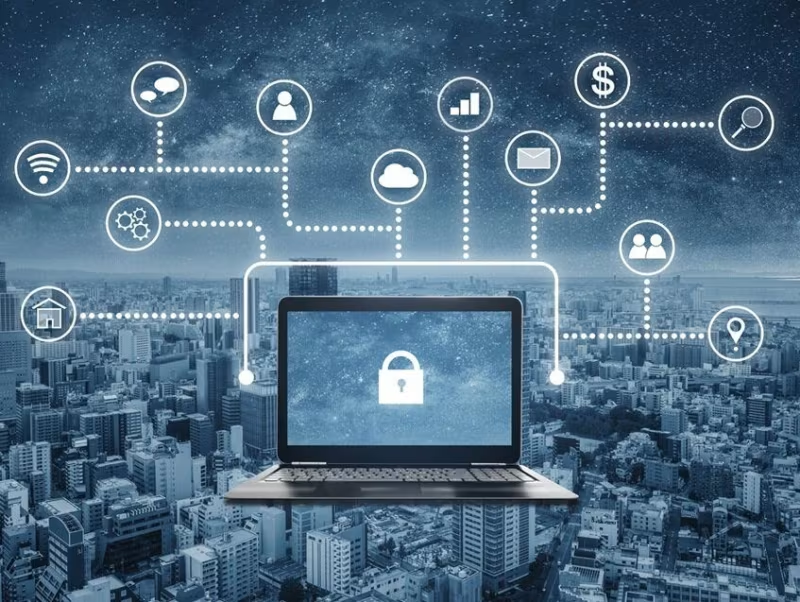Resource / Online Journal
Top 10 Endpoint Security Threats Every Organization Must Know
Explore the top 10 endpoint security threats every organization faces and how to stay ahead with proactive strategies to protect sensitive data and systems.
Published on Jan 10, 2025

As cyber threats become more advanced, securing endpoints is crucial for protecting an organization’s data and infrastructure, especially with remote workers. With each connected device representing a potential vulnerability, recognizing the primary security risks is the first step in developing a strong defense strategy.
In this blog, we’ll highlight the top 10 endpoint security risks and the types of endpoint security that every organization must be aware of to protect against evolving risks and ensure a secure online environment, along with effective endpoint security solutions.
What are Endpoint Security Threats?
Endpoint security risks are the weaknesses in the devices that people use to connect to a network, like desktops, laptops, smartphones, tablets, and even smart devices. These devices often end up being the most vulnerable part of a company’s overall cybersecurity, making them prime targets for cybercriminals who can attack from different angles.
These risks come in many forms, from malware and phishing scams to threats that come from within the organization itself. It's really important for businesses to understand these dangers and take steps to protect sensitive information and keep everything running smoothly.
The Top 10 Endpoint Security Threats
1. Advanced Persistent Threats (APTs)
Advanced persistent threats (APTs) are highly complex, long-term cyberattacks that target specific organizations. These threats often exploit unpatched vulnerabilities in operating systems or applications, allowing attackers to remain undetected within an enterprise environment for an extended period. APTs are dangerous because they can silently extract sensitive data or disturb critical systems without triggering alarms.
To combat APTs, organizations should invest in endpoint detection and response (EDR) tools, which monitor endpoint devices for unusual behavior and help detect potential threats in real-time. Regular patching of vulnerabilities and the use of network segmentation can also reduce the risk of APTs.
2. Malware and Ransomware
Malware, including ransomware, is another major threat to endpoint security. Ransomware encrypts important data and holds it hostage until a ransom is paid, while other types of malware can damage files, steal credentials, or compromise your systems. These attacks often spread quickly and cause disruptions that impact productivity and lead to costly recovery.
A solid endpoint protection plan with next-gen antivirus software, real-time threat monitoring, and automated incident response mechanisms will go a long way in preventing malware and ransomware infections. Plus, frequent data backups can help ensure that even if a device gets hit, your organization can recover quickly.
3. Zero-day vulnerabilities
Complex cyber threats, such as zero-day vulnerabilities, pose a significant risk to endpoint security. A zero-day vulnerability is a flaw in software or hardware that the vendor is unaware of, often exploited by attackers before a patch or fix can be released. These vulnerabilities can be particularly dangerous for endpoint devices that rely on third-party software or cloud-based solutions.
To stay ahead of zero-day attacks, use security solutions with machine learning capabilities that can detect unusual behavior, even if the threat hasn’t been seen before. Implement a zero-trust model and constantly monitor endpoints for any signs of abnormal activity.
4. Data Leakage
Data leakage happens when sensitive information is unknowingly exposed or accessed by unauthorized people. This can happen when an employee loses their laptop or mobile device, or when sensitive data is improperly shared via unsecured cloud services or email. Data leakage can result in severe financial losses and harm to reputation.
To prevent data leakage, encrypt sensitive data, implement secure mobile device management (MDM) practices, and limit user access to only necessary resources. Data loss prevention (DLP) tools can also be useful in stopping unauthorized transfers of sensitive information.
5. Botnets
Botnets are groups of devices that have been secretly infected with malware, giving cybercriminals control over them. Once compromised, these devices can be used for harmful activities like spreading malware or flooding inboxes with spam emails. Because botnets can involve thousands or even millions of devices, they can make attacks much more powerful. They’re commonly used in large-scale DDoS attacks or to spread ransomware, causing significant damage in the process.
To prevent botnets, regularly update software, use strong passwords, and enable multi-factor authentication for all devices. Install reliable antivirus and anti-malware tools and monitor network traffic for unusual activity. Educating users on phishing and securing IoT devices further helps protect against botnet infections.
6. Phishing Attacks
Phishing remains one of the most common endpoint security risks, especially with the increasing use of email and mobile devices. Attackers use phishing emails or fake websites to trick employees into disclosing sensitive information like login credentials, financial data, or personal details. Once compromised, attackers can gain unauthorized access to the networks, potentially leading to data breaches.
Organizations can mitigate the risk of phishing attacks by implementing advanced email filtering solutions, conducting regular training to raise awareness about social engineering attacks, and using endpoint protection software with phishing detection capabilities.
7. Brute Force Attacks
A brute force attack occurs when cybercriminals use automated tools to guess passwords by systematically trying all possible combinations. This method relies on the assumption that a weak or common password will eventually be cracked. Brute force attacks can target any system with weak security, including online accounts, servers, or encrypted files. Once the attacker successfully gains access, it can lead to data breaches, stolen personal information, or system compromise.
To prevent brute force attacks, enforce strong, complex passwords with a mix of letters, numbers, and symbols. Implement account lockouts after several failed login attempts and use multi-factor authentication (MFA) for added security.
8. DDoS (Distributed Denial of Service)
DDoS attacks are a significant threat because compromised endpoints, such as IoT devices or employee computers, can be turned into part of a botnet to launch traffic floods at a target. These attacks leverage weaknesses in individual devices, making endpoint security crucial for preventing devices from being hijacked and used in large-scale DDoS operations.
To prevent such threats, organizations must ensure that all endpoints are protected with up-to-date security measures, including firewalls, anti-malware tools, and strong authentication protocols.
9. Insider Threats
Insider threats are a major endpoint security concern, as trusted individuals may misuse their access to systems or data, either maliciously or accidentally. Since insiders already have legitimate access, detecting harmful actions can be difficult, whether it's data theft or unintentional leaks.
To prevent insider threats, enforce strict access controls, applying the principle of least privilege, and use user activity monitoring to detect unusual behavior. Regular security training and deploying endpoint detection and response (EDR) tools can also help mitigate risks by identifying deviations and preventing unauthorized data access or leaks.
10. Shadow IT
Shadow IT occurs when employees use unauthorized devices or applications, creating security risks by bypassing official controls. These unapproved tools can lead to data breaches, malware infections, and compliance issues.
To prevent shadow IT, organizations should set clear policies on approved software and educate employees about associated risks. Implementing endpoint monitoring tools, offering secure alternatives, and regularly auditing IT usage can help identify and eliminate unauthorized devices or applications.
Conclusion
Staying on top of effective endpoint security risks is more important than ever for protecting your organization’s data and operations. As cyber threats grow more complex, it’s essential to be proactive and aware of the risks. By putting the right security measures in place and fostering a security-conscious culture, you can better safeguard your business from attacks.
Investing in strong endpoint protection, with the help of trusted partners like TechDemocracy, not only keeps your data safe but also empowers your organization to thrive in an ever-evolving technological landscape.
Recommended articles


Strengthening Cybersecurity and Manufacturing: Best Practices for 2025
Take Your Identity Strategy
to the Next Level
Strengthen your organization's digital identity for a secure and worry-free tomorrow. Kickstart the journey with a complimentary consultation to explore personalized solutions.